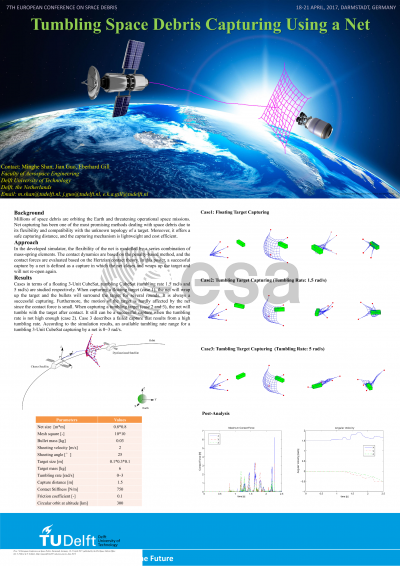Document details

Abstract
Millions of space debris are orbiting the Earth and threatening operational space missions. Tethered-Net capturing has been one of the most promising methods dealing with space debris due to its flexibility and compatibility with the unknown topology of a target. Moreover, it offers a safe capturing distance, and the capturing mechanism is lightweight and cost efficient. Several simulators have been designed for simulating the net deployment and/or capturing movement. Nevertheless, little attention has been paid on capturing a tumbling target with a tethered-net. As consequence, its capability of capturing a tumbling target is insufficiently understood since both ground-based and space-based test are difficult to be performed.
In this paper, a simulator for capturing tumbling targets using a tethered-net is introduced and followed by the analysis of the simulation results. This simulator is able to simulate the entire process of space debris capturing including the net shooting, net deployment, and the contact effect between a net and a tumbling target. The flexibility of the net is modelled by a series combination of mass-spring elements. The contact dynamics are based on two methods: the penalty-based method and the constraint-based method. Strengths and drawbacks of these two contact methods are discussed. A tumbling downscaled Envisat mock-up is built as the target in the simulator. Finally, as a main contribution in this paper, criteria for a successful capturing are defined, and an available tumbling rate range is suggested based on simulation results. This analysis provides a valuable guidance for a real mission design.
Preview


